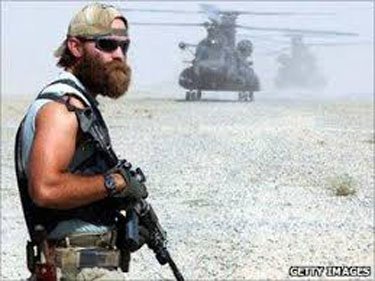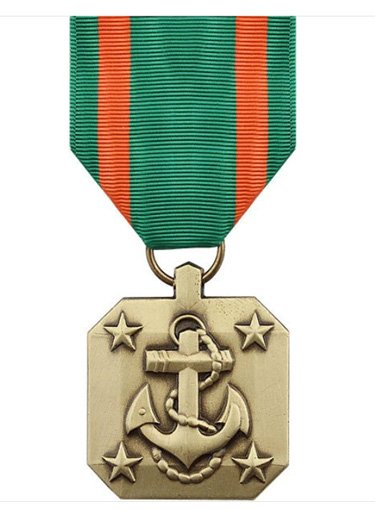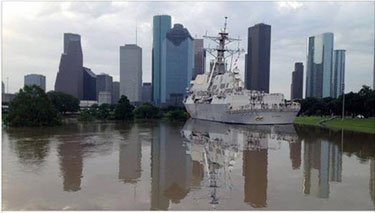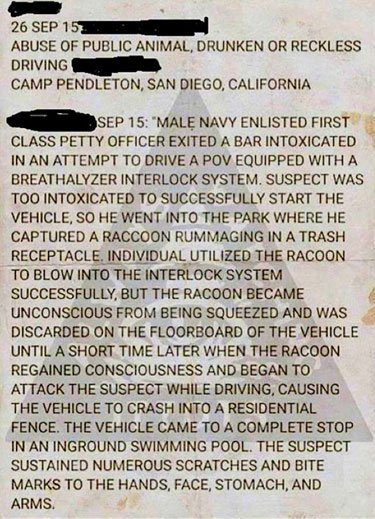Category Archive 'US Navy'
24 Jun 2024


Vladimir Putin the Terrible responded to US permission to Ukraine to employ US-supplied weapons to strike military targets deeper in Russia with a show of force designed to strike fear in American hearts.
He dispatched a Russian naval flotilla, including a nuclear submarine, to sail dramatically close to Florida while steaming in the direction of Havana.
The world’s newspapers headlined Tsar Putin’s scary, scary sabre rattling.
South Florida Sun Sentinel:
Three Russian Navy ships and a nuclear-powered submarine will arrive at the Port of Havana for an official visit next week, the Cuban armed forces said in a statement Thursday, confirming the military exercises first disclosed by U.S. officials on Wednesday.
The Cuban Revolutionary Armed Forces said the Russian missile frigate Admiral Gorshkov, the nuclear sub Kazan, the oil tanker Pashin and the salvage tug Nikolai Chiker will arrive on June 12 and stay for a week.
The Cuban military said the visit by the Russian Navy ships is part of the “friendly” relations between the two countries, complies with international law and does not pose a security threat to the region because “none of the ships carry nuclear weapons.”
Take that, United States! Tremble in your boots, American warmongers!
It sounded downright alarming, alright. But a little dose of reality from Murphy Barrett responding to a question on Quora puts it all into proper perspective.
Could Russia simply blockade America’s ports to stop and search every ship heading towards Europe and seize military equipment bound for Ukraine?
You do realize that most of Russia’s Black Fleet was sunk…by land forces.
As a show of force, Russia sent a “flotilla” to putter around Cuba consisting of one frigate, a submarine that is missing part of soundproofing panels (you know, those things that keep submarines quiet), and two support ships. So that’s one surface combatant that a Coast Guard cutter could deal with, a submarine that Helen Keller could hear coming, and two support ships to nursemaid them.
Meanwhile, the US Navy is the largest navy in the world (fuck China, we’re counting combatants, not just every thing that can float including canoes), the US Navy is also the second largest air force in the world (after the US Air Force), and frankly nobody who fucks with our boats gets away with it, as the Houthis most recently found out, and the Japanese found out hardest.
Hell, Iran fucked with our boats once, and we wiped out half of their navy, in eight hours, and only stopped because the US Admiralty thought that we probably shouldn’t wipe the whole thing out because…reasons, I guess.
I mean, if Putin somehow lost what little sanity he has left, and decided to fuck with our boats, the only problem the US Navy would have bitch-whipping him all the way back to Moscow would be to explain how in fuck all the lady sailors managed to actually pop motto-boners. Anatomically improbable, yes, but goddamn is the Navy gonna have a field day protecting the environment and creating new coral reefs.
————————
Many decades ago, when I was young and working on war game design at the late great Simulations Publications in New York in the late 1970s, there was news of a Soviet naval build-up, and SPI began contemplating a new Soviet Navy versus NATO and US Navy game.
At the weekly designers conference, all the keen military history buffs sat around the big table discussing current and future projects. And the new major “Naval War with the Russians” proposal came up.
One of the older grognards interrupted, inquiring aloud: When exactly was the last time the Russians ever won a naval action?
Present were over a dozen knowledgeable experts in military history, and we all were flummoxed. “Uh, how about the Battle of Navarino (20 October 1827 during the Greek War of Independence)?” asked a true savant.
No, someone else reminded us: the Russians were only a small part of a mostly British and French Allied fleet under British command.
We were left wondering if it would be possible to count John Paul Jones victories against the Turks under Catherine the Great in 1787. And the proposed game died buried under gales of laughter at the idea of the Russian Navy trying to take on the US Navy.
06 Aug 2020


Francis Pike, in the Spectator, warns that China is well on the way to adding strategic domination of the Bay of Bengal and the sea lanes to the Middle East to its ruthless appropriation of the South China Sea. Only the superior power of the US Navy stands in China’s way, but China is planning a massive naval expansion, and the US is not.
The forthcoming geopolitical struggle for supremacy between China and India will not be on land. It will be on water and a much larger body of water than Pangong Lake. The Bay of Bengal and the Andaman Sea will become the defining-battleground.
Xi Jinping’s ‘Maritime Silk Road’ policy is less talked about in the western press than ‘One Belt One Road’. The economic and military strategy is to dominate the sea lanes between China and the Middle East. As in the ancient Chinese board game of territorial control, Go, which inspired the great military theorist, Sun Tzu, Xi’s China is in the process of placing ‘stones’ (Go’s playing pieces) on Asia’s maritime seaboard that will enable it to achieve this dominance.
China’s first offshore naval port in Djibouti, adjacent to the Suez Canal, is already built. Pakistan’s Chinese-financed port of Gwadar on the Arabian Sea, guarding the approaches to the Strait of Hormuz, is another one of the stones. Closer to home, China, by its placement of airfields and naval facilities on reclaimed reefs in the Spratly Islands, has now gained probably irreversible control of the South China Sea.
From China’s viewpoint this is not enough. A third of global shipping and most of China’s oil imports pass through the Strait of Malacca between Singapore and the Indonesian island of Sumatra. As a Portuguese envoy noted in the 16th century, ‘whoever is lord of Malacca has his hands on the throat’. With the US navy embedded in Singapore’s Changi naval base, China sees the Malacca Strait as the weakest link in its maritime strategy. Thus, the digging of a $30 billion, 80-mile canal across the Kra Isthmus in southern Thailand is being mooted. The canal would bypass the US-controlled Malacca Strait and give China unimpeded access to the Andaman Sea and the Bay of Bengal. Reputedly, Chinese companies are already buying up land around the projected route of the canal. Importantly, over the past 20 years, Thailand, once a staunch US ally, has become a quasi-satellite of China.
Further inroads into the Bay of Bengal are being established by Chinese financing of the new port at Chittagong in Bangladesh, a country whose relationship to India, if not hostile, is nevertheless equivocal. It is somewhat overlooked that Bangladesh, a country of 165 million people, is now one of Asia’s fastest-growing economies.
Myanmar is even more in thrall to China. As the old Burmese saying goes: ‘When China spits, Burma swims.’ Here too China is financing a major port development on the coast of Rakhine state, home of the Rohingyas. In January, during Xi’s state visit to Myanmar, there was a joint announcement that they would push ahead with the construction of a new port in the Kyaukpyu Special Economic Zone. It is planned to link both this and the port in Chittagong by rail and road to Kunming, the capital of western China’s Yunnan Province. An oil pipeline is also planned. Meanwhile in the southern reaches of the Bay of Bengal, the People’s Republic of China and the Democratic Socialist Republic of Sri Lanka have been close allies since the 1950s.
Although India is fully alive to China’s ‘string of pearls’ strategy, the West appears to be asleep. …
With 11 aircraft carriers to China’s two, America still commands maritime Asia. However, the balance is changing rapidly. As the US congressional report on Chinese naval modernisation concluded in May, by year end the US will have 297 naval vessels, the same number as 15 years ago; China will have 360, up more than 50 per cent over the same period. A third Chinese aircraft carrier is under construction and the hull of a fourth is expected to be laid down next year.
The direction of travel is clear. The US navy could find itself in China’s wake if current trends continue. ‘There is no doubt that they’ve been investing hugely in this,’ says Nick Childs of the International Institute for Strategic Studies. ‘They’ve been outbuilding everybody.’ Unless the West wakes up to the challenge, it is likely to be outgunned within 15 to 20 years by the People’s Liberation Army navy. The European Union, of course, unwilling even to pay for its own strategic defence, is an embarrassing irrelevance. The risk for India and the West is not armed conflict with China. It is that the struggle for supremacy in Asia will be lost with hardly a shot being fired. Sun Tzu would be proud.
RTWT
26 Mar 2020

26″ (66cm) Class “A” (Yamato-Class) Main Armament Turret Face (Port) Plate.
This section of armor plate was meant for use on an 18″ Main Gun Turret on a Yamato class battleship and was found at the Kure Naval Base in Japan after the end of WWII then brought back to the US for testing.
This plate section was originally intended for IJN SHINANO, the third Japanese YAMATO-Class super-battleship, which was converted into an aircraft carrier instead, and sunk on its way to final fitting out yard by a U.S. submarine.
The damage is the result of the impact of a 16″ US armor piercing naval shell during ballistic testing 16 October 1946 at the Naval Proving Ground in Dahlgreen, VA.
This plate is now on display at the U.S. Navy Memorial Museum at the Washington Navy Yard, Washington, DC, just in front of the old Gun Factory building.
link
19 Sep 2019

Popular Mechanics has posted three UFO videos which it says are real videos taken from US Navy aircraft.
The U.S. Navy has confirmed that three online videos purportedly showing UFOs are genuine. The service says the videos, taken by Navy pilots, show “unexplained aerial phenomena,†but also states that the clips should have never been released to the public in the first place.
RTWT
24 Aug 2019


Navy Times:
Stung by a string of scandals starring SEALs behaving badly, Naval Special Warfare commander Rear Adm. Collin Green on Tuesday issued a four-page “back to basics†directive designed to shore up shoddy conduct, restore moral accountability and create better leaders.
Released to senior leaders and then obtained by Navy Times, Green’s guidance returns the SEAL and boat teams to standards expected of service members across the fleet, with a mandate for leaders to conduct “routine inspections of your units and strictly enforce all Navy grooming and uniform standards, including adherence to all Navy traditions, customs and ceremonies.â€
Within popular culture, SEALs often are depicted as bearded commandos with a shaggy pirate bravado but Green’s memo echoes former Chief of Naval Operations Adm. John Richardson’s May advice to the sea service’s leaders, telling them that they will be judged by the character and performance of their teams.
Green’s guidance clearly puts character first and adopts steps that will anchor SEALs not only to their own storied history but to the larger institution of the Navy.
Commanders will inspect their officers and sailors during uniform shifts, establish “weekly battle rhythm events†to include quarters, unit physical training and zone inspections, with Green personally holding leaders “accountable for all substandard issues related to your personnel on and off duty.â€
“We are U.S. Naval Officers and Sailors first and foremost and we will realign ourselves to these standards immediately,†the WARCOM boss wrote.
That was merely one reform in a series of ordered changes Green identified in his “Call to Action†memo, an extraordinary document that Green conceded was triggered by a force that “has drifted from our Navy core values of Honor, Courage and Commitment†and an ethos “due to a lack of action at all levels of Leadership.â€
Without quantifying their numbers, Green told his subordinates that “a portion of this Force is ethically misaligned†with traditional SEAL culture because of those “who fail to correct this behavior†and instead “prioritize this misalignment over the loyalty to Navy and Nation.â€
“This drift ends now,†Green said.
RTWT
01 Aug 2019

Navy Achievement Medal
New York Post:
​President Trump said Wednesday that he would order the Navy to rescind medals given to military lawyers who prosecuted a ​former ​Navy SEAL the president supported during his court martial on murder charges.
“The Prosecutors who lost the case against SEAL Eddie Gallagher (who I released from solitary confinement so he could fight his case properly), were ridiculously given a Navy Achievement Medal,†Trump wrote on Twitter.
“I have directed the Secretary of the Navy Richard Spencer & Chief of Naval Operations John Richardson to immediately withdraw and rescind the awards​,†Trump continued.
​â€I am very happy for Eddie Gallagher and his family!​â€
The four attorneys who prosecuted Gallagher were given Navy Achievement Medals last month, the Navy Times reported.
RTWT
Makes you want to vote for Trump twice.
26 May 2019


This photo of my future wife Karen is from her ancient Yale ID card. It was taken in 1971, her freshman year. The same photo was mounted and framed, along with similar photos of all the other members of the Class of 1975 in Berkeley College, and hung in the Common Room on the wall opposite the Dining Hall.
As you might expect, male Yale undergraduates not infrequently passed the time perusing the four Class Photo Displays, rating each of the young ladies on attractiveness and desirability. (Karen typically came in first in 1975.)
So I was not in the least surprised to read that male submarine sailors were in the habit of rating the respective appeal of their feminine shipmates, now that the US Navy has succumbed to political correctness and foolishly sexually integrated subs. What would anyone expect?
The lying propagandists of the journalistic left sensationalistically refer to the sailors’ ranking of feminine charms as a “rape list,” despite no reference therein of any kind to rape. I suppose they have to. How else would they be able to puff up perfectly natural, and to some at least, complimentary, male behavior into an aggression of some kind, a threat to the womens’ “safety,” and a scandal meriting a 74-page investigation, the discharge of two male sailors, and firing a captain.
“The sexually explicit list describes various USS Florida females by appearances, characteristics and various sexual acts the creators of the list wish to perform with them,” the investigation states. “The list describes aggressive sexual activity, but does not reference non-consensual acts.”
The sub’s commander got fired for failing to respond to complaints from goofy feminists with immediate inquisitorial proceedings. Doubtless, the unfortunate captain thought there were more important priorities on a warship than catering to the amour propre of the hyper-sensitive and easily offended. Clearly, today’s Naval High Command did not agree. Admirals in the Pentagon these days worry less about anti-submarine missiles and depth charges and more about the incredible destructive power of identity politics and crusading journalists.
The whole appalling story is at Military.com.
Donald Trump ought to re-instate those two sailors and the wronged captain, shit-can everybody involved in the investigation including especially the initial complaintants, and issue an Executive Order ending the presence of females in combat units, including warships.
21 May 2019


CNN reports that the Navy is responding with new rules and “diversity and inclusion” counseling after two minority pilots who had been dropped from fighter training for inferior performance complained of Pilot Sign Protocol Bias.
The head of naval aviation has directed the creation of a new process for approving and reviewing pilots’ call signs after two African-American aviators at an F/A-18 Hornet training squadron in Virginia filed complaints alleging racial bias in the unit, from which they said they were unfairly dismissed.
In a formal endorsement letter signed May 13, Vice Adm. DeWolfe Miller, commander of Naval Air Forces, said he found the two aviators, a Navy lieutenant and a Marine Corps captain, were correctly removed from Strike Fighter Squadron (VFA) 106 out of Naval Air Station Oceana due to “substandard performance,” despite errors and inconsistencies discovered in the grading and ranking process.
However, Miller said he did find inappropriate conduct by instructor pilots who did not treat the pilots-in-training “with appropriate dignity and respect,” using discriminatory call signs and having inappropriate and unprofessional discussions about them on social media.
He directed the Chief of Naval Air Training to have all training command and fleet replacement squadrons in the Navy formalize a call sign assignment and review process within 90 days, including appropriate peer board representation for minority and female aviators. And he recommended that multiple officers, including a Navy captain, receive rebukes, counseling or administrative punishment for their role in events substantiated by the investigation.
Miller also ordered that VFA-106 receive training on appropriate use of social media and that the unit bring in a “diversity and inclusion expert” to train the squadron on unconscious bias and stereotype threat. Similar training, he wrote, will also be added to the curriculum for prospective commanding and executive officer courses and commander training symposia.
RTWT
24 Sep 2017


Homeland Security interviews an anonymous captain.
Captain F:
[N]ow we had a situation where you had decommissioned a large portion of the fleet. We are down close to 255 ships or so the last I looked, and we are still heading downward. On top of that, you were asking those ships we had to do jobs previously done by larger, better-armed and better-manned vessels.
It did not take me long after I took command of Fleet Training Center Norfolk in ‘98 to realize that I was supposedly training the chiefs and first-class petty officers of the new ships and that I would soon be expected to train the lower rank 2nd class petty officers and below. In other words, we should have been taking into account the fact that each of those men was going to have to have the knowledge, skills and abilities of about six people in order to do their jobs. The DDX was originally meant to be manned by 75 people versus the 250 to 350 men found on either the DDG51s, Spruance cans or Tico cruisers.
The LCS was even worse. They were expected to come into the fleet with a minimally manned ship of under 50.
IM: There was a large drawdown in the ‘90s. Many military bases closed. This continued until 2000?
Captain F: After all that was going on in the ‘90s, we also had a mandate to transform the Navy; build a better tooth-to-tail ratio and cut the personnel budgets. Think about it: if you can’t cut capital infrastructure such as ships, then the only place to look is manning.
From my perspective in the training world, that meant we had to figure out how to cut the costs of training by doing it smarter and with technology. Up until then, all Navy schools delivered training the same way – blue smock, pointer and blackboards.
The personnel command was meant to transform the way we assigned people to ships, considering the skills they had, to ensure that the right folks were assigned. That is how and why Task Force Excel came into being in 2000. Donald Rumsfeld came in as Secretary of Defense and instituted large transformation efforts.
From the Navy perspective, the CNO was Vern Clark and he fully supported the transformation efforts. We did a lot of good work and instituted a lot of change.
But as in all organizations, resistance to change can be powerful. In my opinion, to successfully get anything established, you should have at least seven years. We had that barely before the CNO retired, and a new one took his place and the resistance built back up.
IM: So it’s a leadership issue?
Captain F: What gave out was leadership. The admirals did not put their careers on the line and object about anything. They rolled over to save themselves. That is the big picture. From a more localized perspective, the direct in-line people, COs, XOs and MCPOs, also rolled over.
There is no way on my ships that would have happened. We always had direct leadership. Leadership that was there, present and capable. I am willing to bet that those ships involved in incidents with merchants had all their sexual orientation, transgender training, and environmental training all completed at the expense of the safety and operational training.
If you put the emphasis on social issues, you get a social force. If you put it on operational issues, you get an operational force.
The mistakes I see in the latest incidents – I have read the actual reports on the Fitzgerald – were so simple and basic it takes your breath away. Technology can never replace humans in totality, especially when the law of gross tonnage applies.
As CO, I would have been on the bridge in both those incidents. We would have had highly qualified officers and petty officers on watch.
So if you can follow my logic here is what I conclude. There was a confluence of leadership failures:
First, there was a failure by the nation and particularly the executive branch of the government to recognize that by using the armed forces as a social change agent, as well as denying them the tools (forces) to do the job, will always cause the forces to break. We are at the breaking point and it shows.
Second, there was a failure in naval leadership writ large from the time we tried to transform the forces to meet the threat to today. Not enough senior leadership was stepping forward, ready to sacrifice themselves, so our sailors would not be.
In addition, it has been obvious to me that SECNAV Mabus was able to transform naval leadership in a way to conform to his world view; [that he] fired or relieved those who did not conform to his views and promoted those that did. I think the top leadership is pretty rotten, although I am sure there is “good wood†in there somewhere.
Third, the direct chain of command must have been weak – 7th Fleet down through the commodores of the squadrons – or these ships would not be having these problems. Either the standards are too low or they are worrying about other things. I suspect they are worrying about other things, such as the social experimentation going on and how they get through so they can continue to survive themselves.
Fourth, the ship climate and command structures were obviously out of whack. COs don’t get to sleep in in heavy shipping waters, [that’s] just a fact.
Fifth, while it might be convenient or popular to string some kind of conspiracy theory, the mistakes made were all simple things: basic ship handling, navigation and seamanship stuff. Destroyers do not get run down by merchants; they are faster and much more maneuverable. No, they were not hacked; they were not run down on purpose. They just were asleep at the wheel.
Sixth, I am surprised and will continue to be surprised if some of these folks in leadership positions are not court-martialed. There is a good case for manslaughter in my mind.
And lastly, we need to truly transform the services, not from a social viewpoint but rather from a warfighting viewpoint. Capabilities are available for us to reduce crew manning and use distributed systems, but like anything [else], we have to be serious about doing it. Perhaps that will be the one good thing coming out of all of this.
The last thing I will say is that the Navy has a very difficult issue transforming. Since it is capital-heavy, it needs to do more to bring down shipbuilding costs, while at the same time work assiduously to transform our personnel into distributed nodes with authority, that is transforming the personnel force. That is a tall order and it takes people not only with leadership skills but also imagination and vision, which is a commodity in short supply.
RTWT
31 Aug 2017

Duffleblog:
HOUSTON — As if the city of Houston hasn’t seen enough tragedy due to catastrophic flooding from Hurricane Harvey, things took a turn for the worse today after a U.S. Navy ship collided with a building in the downtown area.
The ship was identified as an Arleigh Burke-class destroyer belonging to the Navy’s 7th Fleet.
It was unclear why the destroyer was not able to see the building and take evasive action, or why it was over 20 miles inland and trying to navigate through a major metropolitan area.
RTWT
08 Oct 2016

Hat tip to Vanderleun.
15 Jan 2016


Matthew Bracken comments on a Rick Moran American Thinker post:
I rarely pull out my dusty old trident, but in this case, here goes. I was a Navy SEAL officer in the 1980s, and this kind of operation (transiting small boats in foreign waters) was our bread and butter. Today, these boats both not only had radar, but multiple GPS devices, including chart plotters that place your boat’s icon right on the chart. The claim by Iran that the USN boats “strayed into Iranian waters” is complete bull$#it.
For an open-water transit between nations, the course is studied and planned in advance by the leaders of the Riverine Squadron, with specific attention given to staying wide and clear of any hostile nation’s claimed territorial waters. The boats are given a complete mechanical check before departure, and they have sufficient fuel to accomplish their mission plus extra. If, for some unexplainable and rare circumstance one boat broke down, the other would tow it, that’s why two boats go on these trips and not one! It’s called “self-rescue” and it’s SOP.
This entire situation is in my area of expertise. I can state with complete confidence that both Iran and our own State Department are lying. The boats did not enter Iranian waters. They were overtaken in international waters by Iranian patrol boats that were so superior in both speed and firepower that it became a “hands up!” situation, with automatic cannons in the 40mm to 76mm range pointed at them point-blank. Surrender, hands up, or be blown out of the water. I assume that the Iranians had an English speaker on a loudspeaker to make the demand. This takedown was no accident or coincidence, it was a planned slap across America’s face.
Just watch. The released sailors will be ordered not to say a word about the incident, and the Iranians will have taken every GPS device, chart-plotter etc off the boats, so that we will not be able to prove where our boats were taken.
The “strayed into Iranian waters” story being put out by Iran and our groveling and appeasing State Dept. is utter and complete BS from one end to the other.
/div>

Feeds
|















